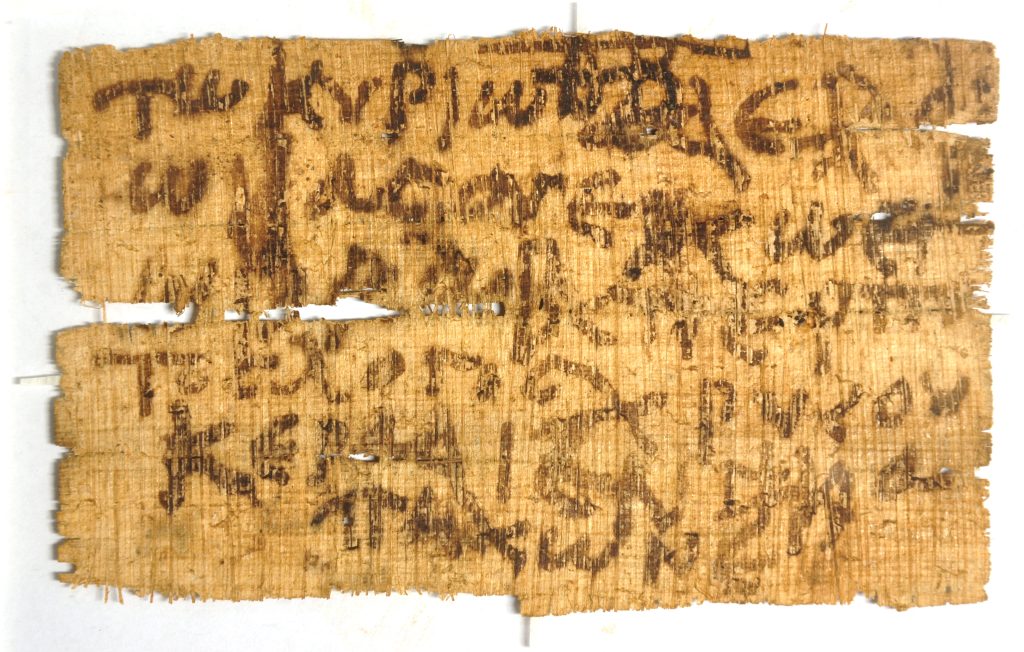Piet and Etty Sijpesteijn fellowship for papyri in the Allard Pierson collection
This fellowship has been made possible by the heirs of Piet and Etty Sijpesteijn. Piet (Pieter) Sijpesteijn was professor of papyrology and ancient history at the University of Amsterdam.
Researchers from different academic disciplines (including papyrology, Egyptology, Coptology, classical languages, archaeology, museum studies etc.) will by means of this fellowship be able to work with the (partially unpublished) papyri in the Allard Pierson collection. Most of this collection was transferred in 2006 to the University Library and later to the Allard Pierson. It will play a significant role in research, education and presentation projects over the years ahead.
The Allard Pierson’s Egypt and Sudan archaeological collection holds a large group of written papyri: ca. 1000 object numbers. These papyri range from a book of the dead to a brief note. Most of them are in Greek, but there are also a number of older (pharaonic) and more recent texts (Coptic and Arabic). Certain of these papyri were published at the time that they were administered by the Humanities Faculty of the University of Amsterdam (up to 2006), many by the professor of papyrology, Piet Sijpesteijn (1934-1996). The papyri have recently been restored and recorded. Subsequent steps will focus on provenance research and research into the texts’ cultural historical context. A range of research questions and directions are possible.
The Allard Pierson envisages creating a number of fellowships for its papyrus collection over a five-year period. The initial preference is for research proposals aimed at provenance research, and later for proposals focusing on the cultural historical context.
Suggestions for research
- Object biography: emphasis on research into provenance history: how, when and by whom were the papyri collected? What are the networks that played a role in this?
- Unpublished: the collection contains a large number of as yet unpublished papyri (largely smaller fragments). How are these fragments related to the rest of the collection and to papyri elsewhere?
- Materiality: many of the texts were written on papyrus, a few on parchment, and sometimes with the use of different colours. What are the insights and information provided by the materiality of the papyri?
- Prosopography: both the published and the unpublished papyri frequently contain personal names. Who are these people, and can they be linked to existing prosopographies, and other Egyptian texts and objects?
- Daily life and writing: the contents of the texts are diverse and cover a long period. There is interest – partly from an educational perspective – in the role of papyri in daily life and how this relates to today.
Searching in the collection
Apart from the oldest papyrological acquisitions by the Allard Pierson Museum, the papyrus collection cannot be accessed online. Important publications of individual papyri and groups of papyri are to be found via Sijpesteijn’s bibliography (https://papyri.info/) or the Trismegistos database by using the search term ‘P. Amst.’ (‘Papyrus Amsterdam’, https://www.trismegistos.org/index.php). The most important publication for circa 100 papyri in the collection is Salomons R.P., Sijpesteijn, P.J., Worp, K.A., 1980, Die Amsterdamer Papyri I. Volume I: No. 1-100. (Studia Amstelodamensia ad epigraphicam, ius antiquum et papyrologicam pertinentia. XIV, Zutphen.
Questions
Questions regarding the collection may be put to curator Ben van den Bercken (b.j.l.vandenbercken@uva.nl). Laurien de Gelder (l.i.degelder@uva.nl) will answer questions on procedure.
